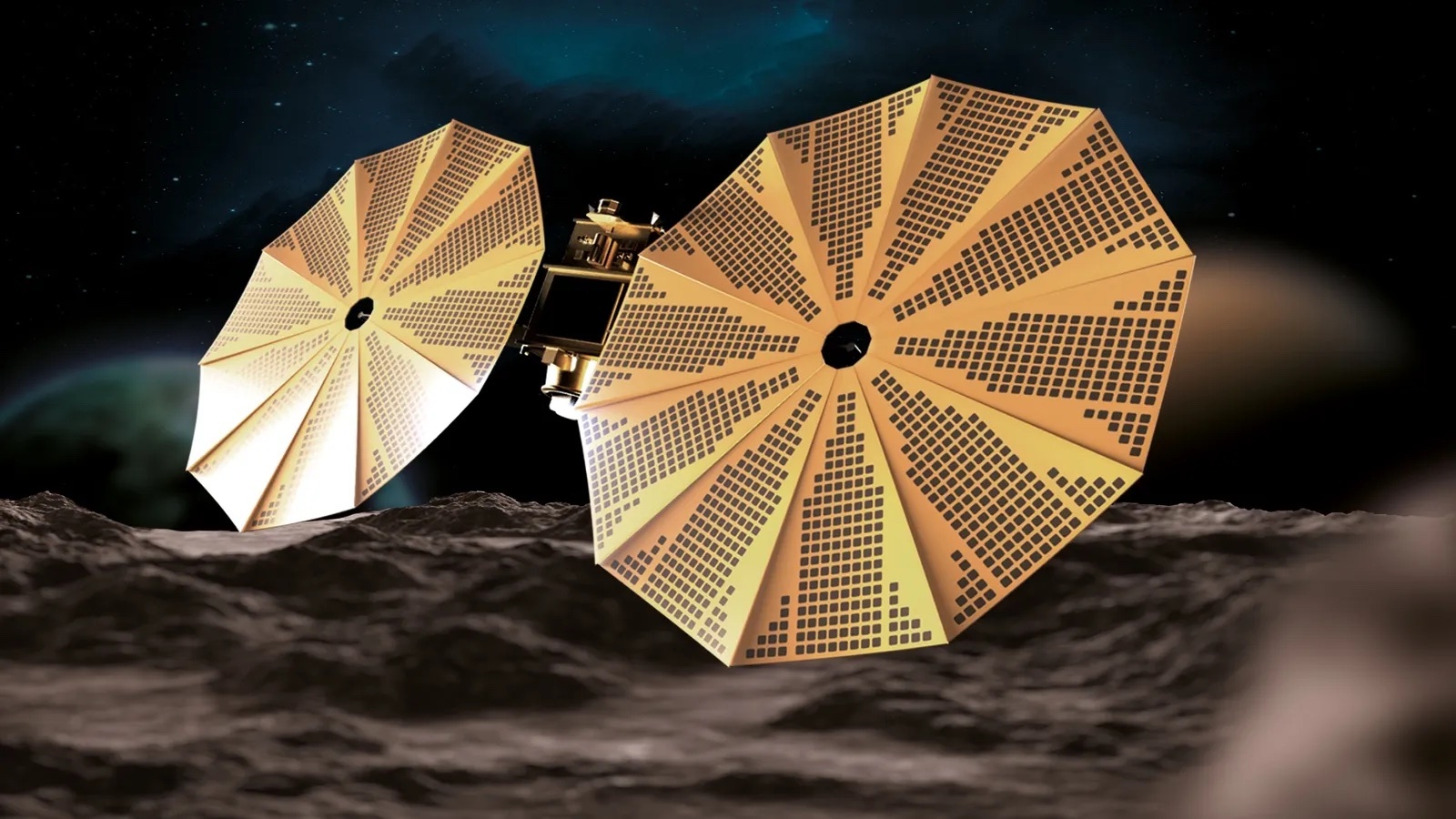5.06.2023

The MBR Explorer spacecraft is at least superficially similar in design to NASA's Lucy asteroid mission. It will fly by six asteroids in the main belt before arriving at a seventh in 2034. Credit: UAE Space Agency
WASHINGTON — The United Arab Emirates has released new details about its planned mission to the main asteroid belt, one that is similar to an ongoing NASA mission.
The UAE Space Agency said its Emirates Mission to the Asteroid Belt (EMA) is scheduled to launch in March 2028, flying by six asteroids in the main asteroid belt before arriving at a seventh asteroid in 2034.
“EMA is a key component of the UAE National Space Strategy and has one overriding goal: the creation of viable and rewarding employment opportunities for young Emiratis for generations to come,” Sarah Al Amiri, chair of the UAE Space Agency, said in a statement.
The EMA spacecraft, called MBR Explorer after Sheikh Mohammed bin Rashid Al Maktoum, ruler of Dubai and prime minister of the UAE, will weigh nearly 2,300 kilograms at launch and carry four instruments from American and Italian partners. The agency said that more than 50% of the “overall contracted mission” will be developed by UAE companies, but listed only satellite operator Yahsat in the announcement.
The UAE Space Agency had previously stated it planned to develop an asteroid mission as a successor to the $200 million Emirates Mars Mission (EMM), a Mars orbiter also known as Hope that launched in 2020 and remains operational today. The May 29 announcement provided the most details to date about the planned mission and its partners.
Notaby absent from the announcement, though, was the estimated cost of EMA. A spokesperson representing the UAE Space Agency did not respond to questions about the mission, including its cost.
The MBR Explorer spacecraft bears a resemblance to NASA’s Lucy spacecraft, launched in October 2021 on a mission to fly by two main belt asteroids and several Trojan asteroids that lead and follow Jupiter in its orbit around the sun. The Lucy mission has a total cost, including launch and operations, of nearly $1 billion.
That similarity includes the use of large circular solar panels to provide power. Lucy’s arrays, 7.3 meters in diameter and built by Northrop Grumman, give the spacecraft a length of nearly 16 meters. The UAE Space Agency did not disclose the size of the arrays or their manufacturer, but noted that when deployed the spacecraft will be 16 meters long.
EMA will have a narrow launch period of just three weeks in March 2028 to carry out the mission. It will fly by Venus in July 2028 and Earth in May 2029 before going by the main belt asteroids Westerwald, Chimaera and Rockox between February 2030 and January 2031. A Mars gravity assist in September 2031 would set up three more asteroid flybys, of 2000 VA28, 1998 RC76 and 1999 SG6, between July 2032 and August 2033.
The mission will conclude by rendezvousing with a seventh main belt asteroid, Justitia, in October 2034. It will remain there at least through May 2035, when it will release a lander to touch down on the surface. The UAE Space Agency said the lander will come from “an Emirati private space sector startup” but did not disclose the name of that company or other details about the lander.
The mission has several scientific objectives, with the primary one to study the origin and evolution of water-rich asteroids. Planetary scientists suspect that Justitia, which is unusually red, may have formed in the outer solar system and later migrated into the main belt.
“As with EMM, novel science and an open contribution of our science data to the global community without embargo are important aspects of EMA,” said Hoor Al Mazmi, leader of the science team of EMA, in a statement.
The mission will work with several universities and organizations in the UAE and elsewhere. The University of Colorado’s Laboratory for Atmopsheric and Space Physics will be the “knowledge transfer partner” on EMA, a role it also had with the Hope Mars orbiter where it supported assembly and testing of the spacecraft. The UAE Space Agency said it has not selected a launch provider for the mission.
Quelle: SN
